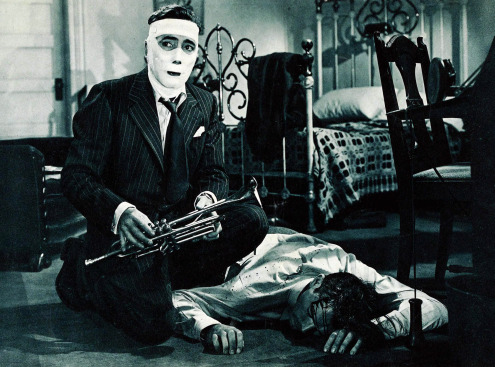It’s probably unfair to say that the public had fallen out of love with Bogart and Bacall by the time 1947’s Dark Passage rolled around. (They certainly hadn’t fallen out of love with one another, despite the 25-year difference in their ages.) But they’d gone from The Big Sleep, one of the greatest hard-boiled detective movies in history, to a film that represented a big step down for the two of them. They’d moved from working with relentlessly professional Howard Hawks to overextended journeyman Delmer Daves. (Daves, who was already 12 films into his career by this point, would go on to direct or write over four dozen feature films, and while there’s some excellent genre material in there like 3:10 to Yuma and An Affair to Remember, his oeuvre is mostly stuffed with clunky junk like A Summer Place, Youngblood Hawke, and Demitrius and the Gladiators.) And though novelist David Goodis was an interesting figure, his novel wasn’t in the hands of a William Faulkner or a Raymond Chandler, and didn’t provide the kind of searing sexual heat they’d brought to The Big Sleep.
It doesn’t help things much that Daves decided on a theoretically clever but ultimately clumsy filming technique to carry Dark Passage. The gimmick of filming a picture from a main character’s point of view wasn’t exactly new; in fact, only a year before, Robert Montgomery had used the same idea to film another Raymond Chandler adaptation, Lady in the Lake. It didn’t work then, and..well, it works a little better here, especially given the specific details of the plot, but it never quite works enough. Daves’ script isn’t smart enough to ask us to consider the difference between the man we react to early in the film and the man he becomes later on; obviously, we’re perceiving him entirely differently by that point, because he’s Humphrey Bogart, but Daves has moved on by that point to heaping helpings of plot complications that divert our attention. It’s questionable whether this subjective point of view can ever be truly great — unlike in video games, we expect the main character in a film to be reactive even more than active — but at this point, we’re talking way above the head of the work in question.
Dark Passage tells the story of Vincent Parry (Bogart), a convicted murderer who busts out of San Quentin and is rescued from certain recapture by the mysterious Irene Jansen (Bacall). In a convoluted series of everybody-knows-everybody-else plotting, Irene — who’s helping Vincent because her own father was falsely accused of murder — is visited by Madge (Agnes Moorehead), who was instrumental in Vincent’s own unjust imprisonment. A helpful cab driver (an appealing Tom D’Andrea) hooks Vincent up with a rogue plastic surgeon who supplies him with a new face, with which he wades back into the tightly knit circle of people who can either help him stay free or send him right back to prison. Once Bogart’s face appears on screen, the whole thing turns into a rat-trap of plot turns that are more suited to a studio mystery than a film noir, but the film does take a doom-struck noir tone when Vincent and Madge have their final showdown. (A tacked-on happy ending rings a bit false, but at least there’s some interesting twists and turns along the way, including a clever cameo from ubiquitous character actor Frank Wilcox and a memorable murder by trumpet.)
The film isn’t without its charms. Daves is no auteur, but he takes more stylistic risks in the movie’s first reel than he would throughout the whole rest of his career. The subjective camera work has its moments (and, honestly, there are a few scenes early on that literally look like someone decolorized an FPS video game), and there’s some gorgeous location shooting in San Francisco that really gives a feel for the post-war look of the city. Though she and Bogart don’t have the flammable charisma of their earlier work — it’s hard to generate any real heat when you’re just talking to a camera lens — Lauren Bacall is on her way to becoming a better actress, displaying the light touch that would serve her well in comedic roles of the ’50s. Agnes Moorehead is also fine as the petty villainess, and the scene in the office of craggy, disreputable plastic surgeon Dr. Coley (Houseley Stevenson) is a winner. But Dark Victory shoots off its fireworks too soon, giving Bogart a chance to act with just his eyes but taking away the bandages from his face and the interest in the story way too early on. It revels too much in its gimmick at first, drags far too much in the later stages, and even the stirring score by Franz Waxman is mostly recycled from another Bogart/Bacall pairing (To Have and Have Not). It’s worth seeing for Bogart completists, gimmick fans, and hopelessly addicted noir devotees, but it’s definitely a second-rate Warner Bros. effort. It’s a perfect example of how crime dramas go astray when they put the focus on plot mechanics and clever staging and draw attention away from moral shading and emotional power.

